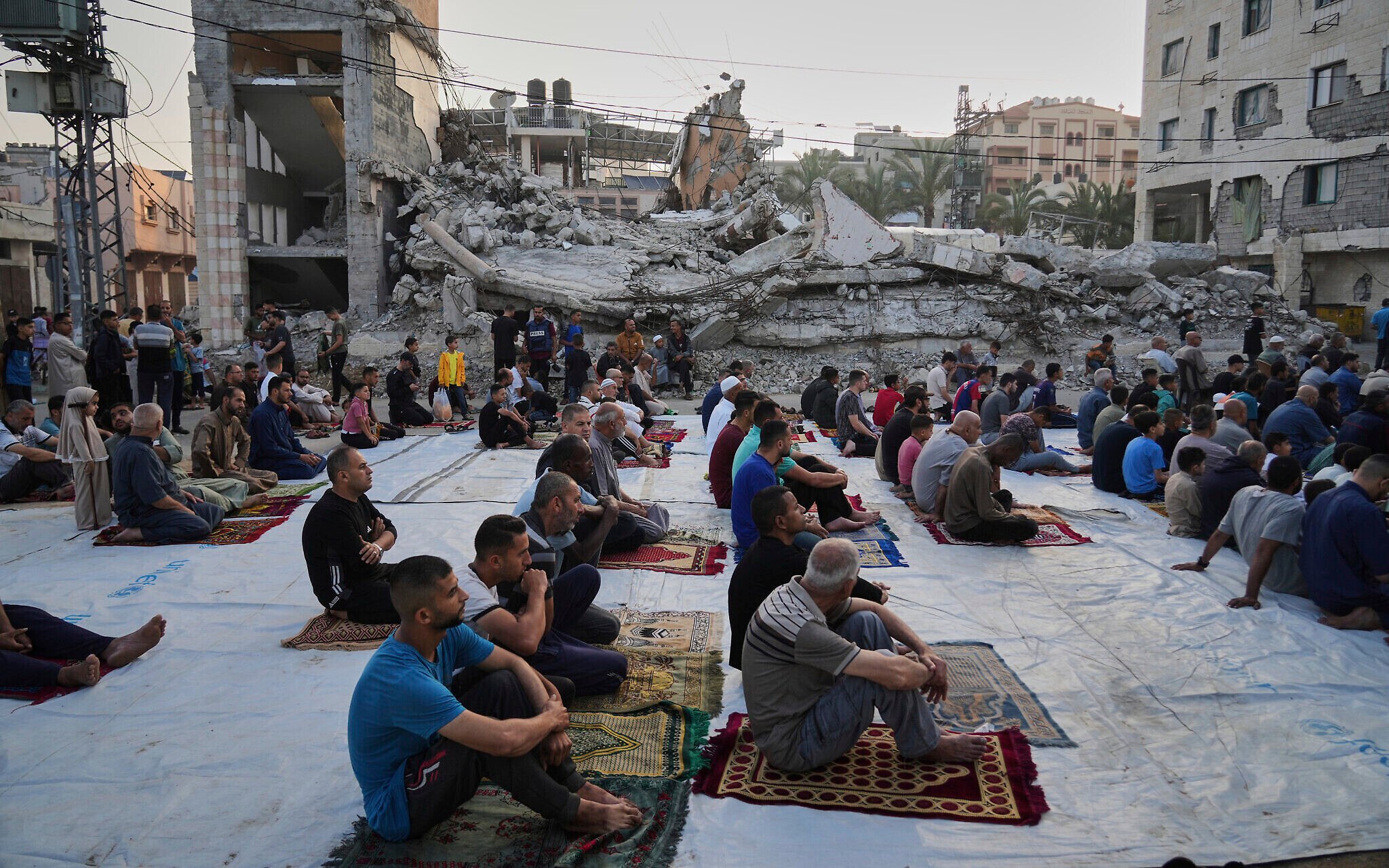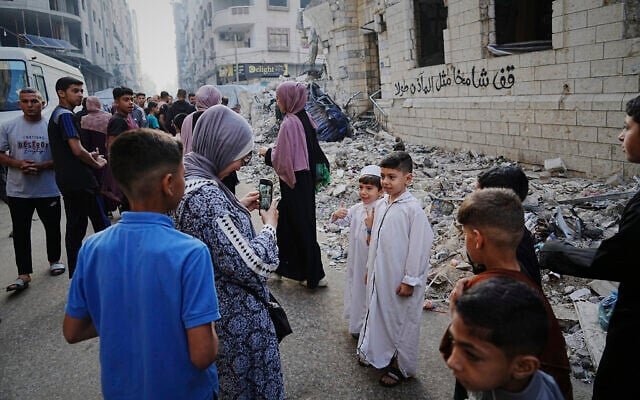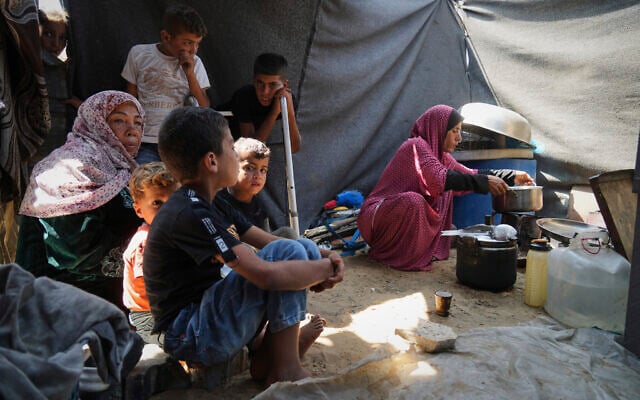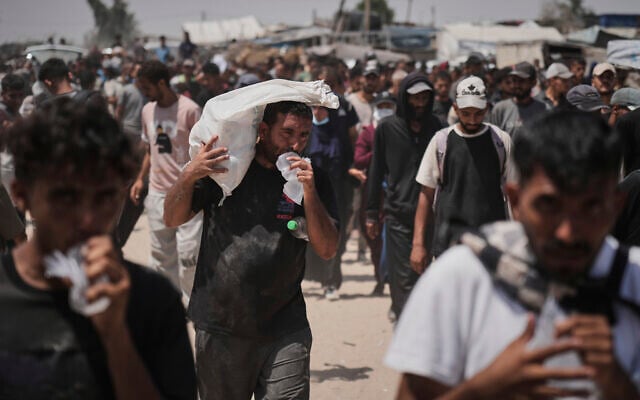



Palestinians across the Gaza Strip marked the start of one of Islam’s most important holidays with prayers outside destroyed mosques and homes early Friday, with little hope that Israel’s war against Hamas will end soon.
With much of Gaza in rubble, men, women and children were forced to hold the traditional Eid al-Adha prayers in the open air and with food supplies dwindling, families were having to make do with what they could scrape together for the three-day feast.
“This is the worst feast that the Palestinian people have experienced because of the unjust war against the Palestinian people,” said Kamel Emran after attending prayers in the southern city of Khan Younis. “There is no food, no flour, no shelter, no mosques, no homes, no mattresses. … The conditions are very, very harsh.”
The Islamic holiday begins on the 10th day of the Islamic lunar month of Dhul-Hijja, during the Hajj season in Saudi Arabia. For the second year, Muslims in Gaza were not able to travel to Saudi Arabia to perform the traditional pilgrimage.
In Gaza City on Friday, Sanaa Al-Ghola, a displaced woman from the neighborhood of Shejaiyah, stood in the rubble of a badly damaged graveyard near a partially collapsed mosque. She had come to pray for her son, Mohamed al-Ghoul, who she said was killed in shelling last month after going to his grandfather’s house to get flour. His father was wounded in the attack.
“We lost our home, money, and everything,” she said, crying as she held her son’s photo. “There is no more Eid after you’re gone, my son.”
Families in al-Mawasi, a vast tent camp for displaced Gazans on the Strip’s southern coast, faced a grim first day of Eid al-Adha.
Tahrir Abu Jazar, 36, of Rafah, warmed up leftover lentils and cooked rice inside her tent, but said she had no bread to feed her five children, who sat on the bare ground nearby.
“There are no Eid celebrations now as there is no new clothes or sacrificial meat, or monetary gifts, or joy,” she said, reminiscing over Eid days before the war when the children had meat. “My son went out and tried to celebrate Eid and was scared of the warplane, so he came back.”
Israel, which has accused Hamas of looting humanitarian aid deliveries, last month ended a nearly three-month blockade on the flow of humanitarian aid into the Strip.
A new US- and Israeli-backed aid agency started operating in the Strip last week, but has been accused by other humanitarian organizations of putting aid seekers in harm’s way, with operations beset by deadly incidents.
Additionally, the Gaza Humanitarian Foundation has come under harsh condemnation from the United Nations, rights groups and foreign countries who say it does not sufficiently address the humanitarian needs in Gaza.
The UN, which has assailed the GHF’s distribution plan, says it has been unable to distribute much of its own humanitarian supplies because of IDF restrictions on movements and because roads that the military designates for its trucks to use are unsafe and vulnerable to looters.
The UN’s Food and Agriculture Organization in Rome said Thursday that Gaza’s people are projected to fall into acute food insecurity by September, with nearly 500,000 people experiencing extreme food deprivation, leading to malnutrition and starvation.
“This means the risk of famine is really touching the whole of the Gaza Strip,” Rein Paulson, director of the FAO office of emergencies and resilience, said in an interview. Israel has denied that the Strip is suffering a famine.
GHF began operating in conjunction with a renewed Israeli offensive in Gaza almost 20 months after the war there was sparked by the Hamas onslaught of October 7, 2023, when thousands of terrorists invaded southern Israel to kill some 1,200 people and take 251 hostages.
According to Gaza’s Hamas-run health ministry, more than 54,000 people in the Strip have been killed or are presumed dead in the fighting so far. The toll cannot be verified and does not differentiate between civilians and fighters.
Jacob Magid contributed to this report.



